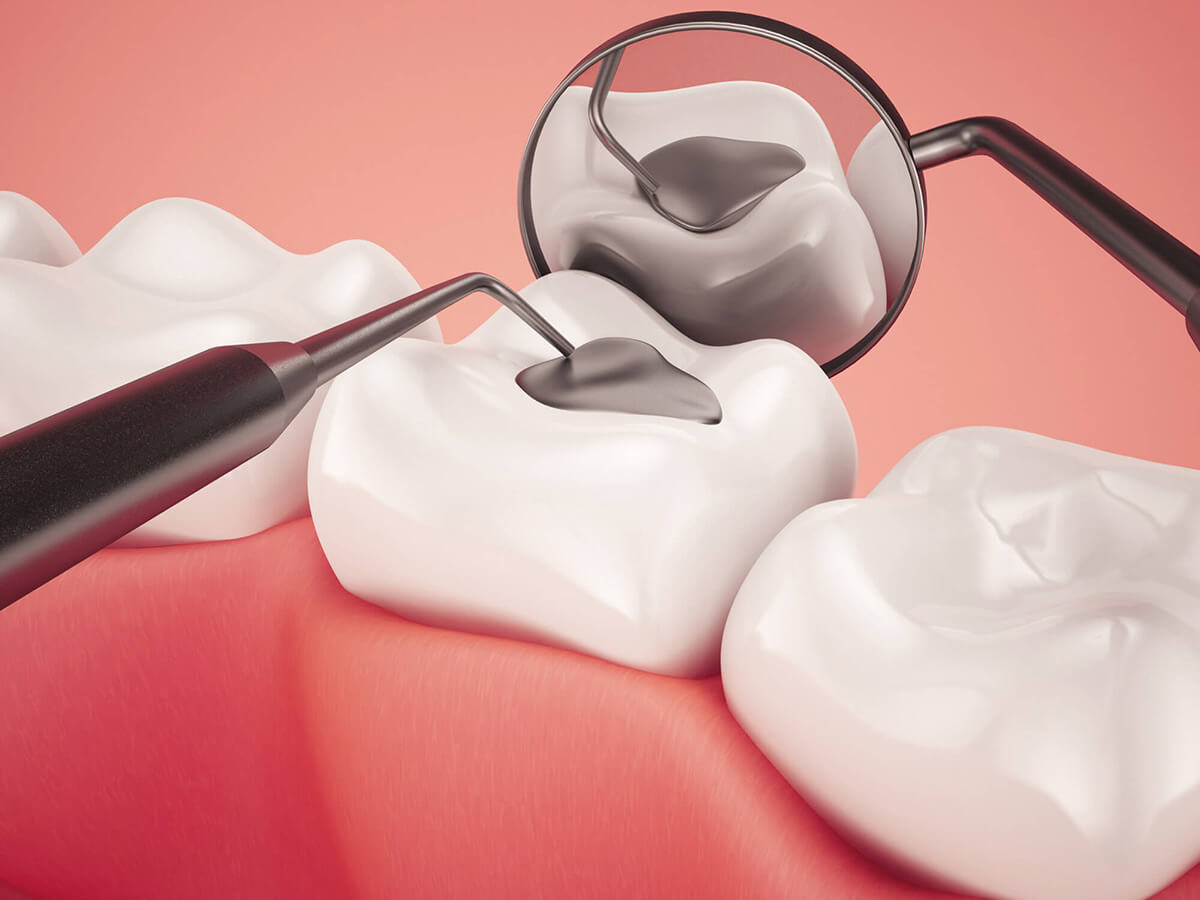Fillings and Sealants
Tooth decay and cavities are common dental issues. Receiving a tooth-colored filling to restore your tooth helps prevent the problem from developing into something worse.
Tooth Fillings and Sealants
A filling is a simple restoration procedure primarily used to restore cavities or other mild decay or deterioration. Fillings are extremely common and have a high success rate. We offer options for composite fillings and amalgam fillings—both are safe. Which type we use depends on your needs, but we commonly use composite fillings because they are tooth-colored and appear more natural for teeth that are visible and easier for others to see or notice.
Sealants are a thin coating that is painted on teeth to protect them from cavities, they are typically used in children but can be used in adults as well. Sealants are a quick and affordable option to preventing cavities and tooth fillings.
At Normandy Lake, we offer dental sedation for all treatments so you have a relaxing visit, every time.

Ask the Expert...
A discussion about Fillings and Sealants with Dr. Lee

-
What is a cavity, and how does it form?
A cavity is a hole that forms in the tooth when bacteria in the mouth produce acids that erode the tooth’s enamel. This usually happens when plaque—a sticky film of bacteria—builds up on the teeth and isn’t removed through proper brushing and flossing. If the plaque isn’t cleaned away, the acid it produces begins to dissolve the tooth enamel, and over time, a cavity can form.
-
What are some early signs of a cavity?
Early signs of a cavity include tooth sensitivity, particularly to sweet, hot, or cold foods and drinks. You might also notice a slight toothache or pain when biting down. In some cases, you may see visible discoloration on the tooth, such as white spots or dark spots. As the cavity progresses, it can cause more intense pain and discomfort.
-
What causes cavities to form?
Eating sugary foods and drinks contributes to cavity formation but is not the only factor. It’s more about how long the sugar stays on your teeth and how frequently you consume it. Every time you eat or drink something sugary, the bacteria in your mouth produce acid that attacks the tooth enamel for about 20 to 30 minutes. Frequent snacking or sipping on sugary beverages throughout the day exposes your teeth to these acid attacks repeatedly, which increases the risk of cavities. Other factors include poor oral hygiene, dry mouth, and even genetics.
-
How are cavities treated?
Treatment depends on the severity of the cavity. In early stages, we can sometimes reverse a cavity with fluoride treatments that help remineralize and strengthen the enamel. For more advanced cavities, we typically use a filling to restore the tooth. We remove the decayed portion of the tooth and then fill the area with a tooth-colored material. In severe cases in which the cavity has reached the inner pulp of the tooth, a root canal or even extraction might be necessary.
-
What is the most important thing to know about cavities?
Cavities are preventable and treatable when caught early. If you notice any signs of sensitivity or pain, don’t wait to get it checked out. Early intervention can save your tooth and prevent more extensive treatments down the road.
What are you waiting for?
We strive to provide high-quality dental care. Schedule an appointment today to discuss whether fillings and sealants are right for you.

















